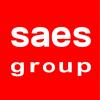 AlkaMax, an advanced alkali metal dispenser for mass production of Organic Light Emitting Diode (OLED) displays that eases the manufacture and increases OLED performance in terms of operating voltage and luminosity.
AlkaMax, an advanced alkali metal dispenser for mass production of Organic Light Emitting Diode (OLED) displays that eases the manufacture and increases OLED performance in terms of operating voltage and luminosity.
SAES Getters DryFlex proves to be the accomplished technology that boosts OLED display duration to over 30%, as demonstrated by a main OLED manufacturer in its tests.
SAES Getters’ AlkaMax offers the unique opportunity of using a safe and stable source to create a pure alkali metal single layer or an Alkali Metal Doped Organic Layer (AMDOL) instead of LiF or Li2O or any other electron injection stratum. These benefits are acknowledged by research groups of professor Kido at Yamagata University and of professor Adachi at the Chitose Institute of Science & Technology in Hokkaido1, that used AlkaMax in their tests and experiments. The use of pure alkali metal layer can overcome the needs of a strict control of the composition and thickness of the layer: through AlkaMax, a thin layer of metallic Cesium (Cs) or of another alkali metal can be easily and reliably created, exploiting all of the advantages of a low work function metal.
SAES Getters’ DryFlex is the thinnest dryer solution available for OLEDs, delivering the best trade-off between high sorption speed and reduced product thickness and it can be fully customized in shape and size to accommodate any display geometry.
Read more in the attached press releases.







